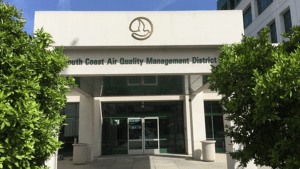The Coalition for Clean Air (CCA) applauds the South Coast Air Quality Management District (SCAQMD) for passing Amended Rule 1109.1. This new rule, which passed unanimously, is expected to reduce smog-forming oxides of nitrogen (NOx) by nearly eight tons per day by 2031. These reductions are crucially important; Southern California suffers from some of the dirtiest air in the nation and fails to meet state and national air quality standards.
“Today’s vote is a win for clean air, the clean economy and environmental justice,” said Chris Chavez, Deputy Policy Director at Coalition for Clean Air. “The refineries, which are some of the biggest polluters in California, have long escaped tougher rules. Importantly, a strong refinery rule was also a key promise to the frontline communities that have long been impacted by oil refining.”
The new refinery rule sets new emission limits on nearly 300 pieces of refinery equipment and establishes different compliance pathways for the refineries. Importantly, refineries will have to achieve actual emission reductions rather than gaming the system through a credit trading scheme. This rule also advances the wind-down of the district’s market-driven RECLAIM program, which has been ineffective in improving air quality.
The public health and economic benefits from the new refinery rule are enormous. According to SCAQMD’s socioeconomic impact report, the rule will result in 370 fewer premature deaths, 6,200 fewer asthma attacks and 21,400 fewer missed work days due to illness. Rule 1109.1 will yield $2.63-3.49 billion in monetized public health benefits and create, on average, 213 jobs annually.
Another important aspect of Rule 1109.1 is environmental justice. The bulk of California’s oil refining capacity is clustered around the neighborhoods of Wilmington, Carson and West Long Beach. These communities, which are largely comprised of low-income earners and people of color, are among the most polluted in California. In response to 2017’s Assembly Bill 617 (AB 617), SCAQMD developed an emissions reduction plan in conjunction with the community. Among the commitments in the Plan was a stronger refinery rule.
“These new rules are by no means perfect,” said Chavez. “The rule could have been even stronger, and full implementation will go far beyond the deadline set in state law. Despite this, Rule 1109.1 is still a significant, meaningful step towards cleaner air in Southern California.”
###








